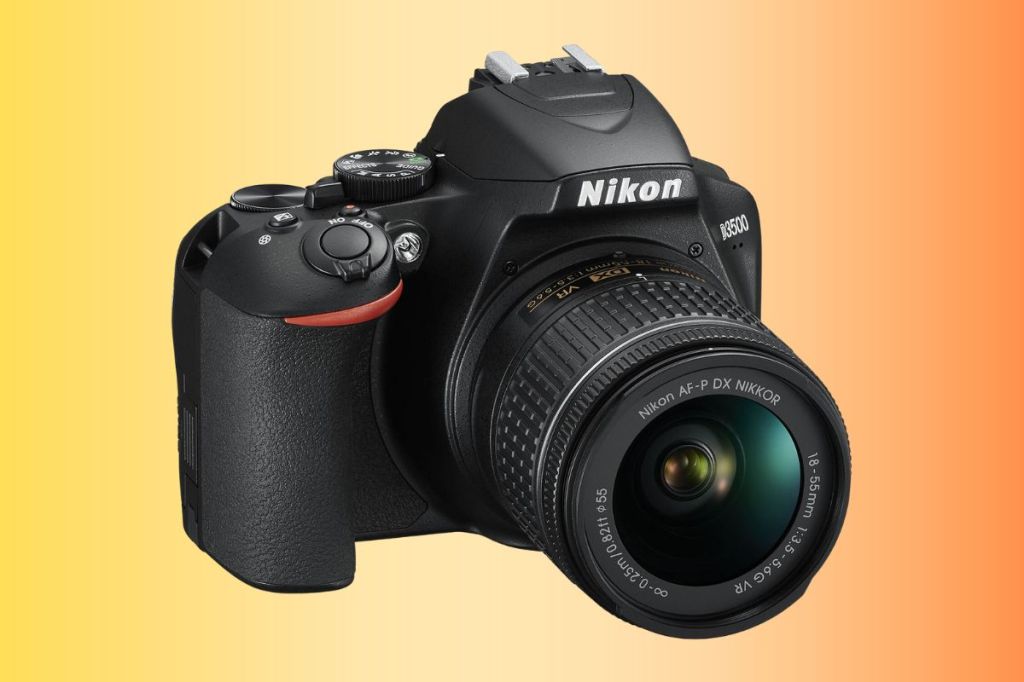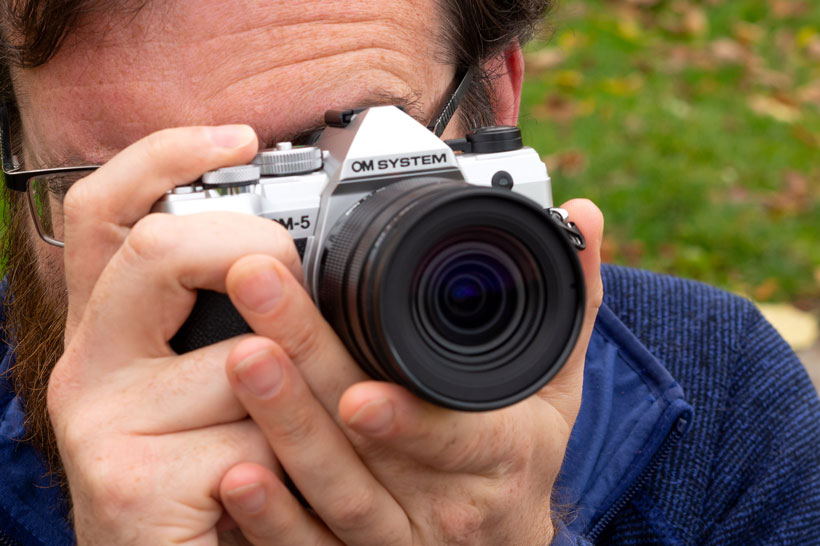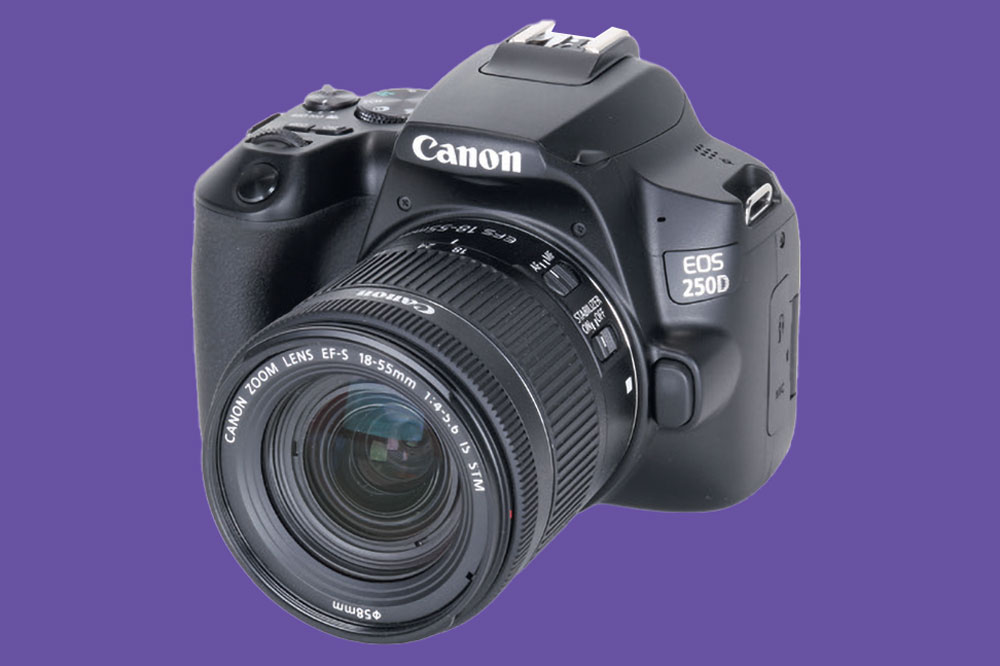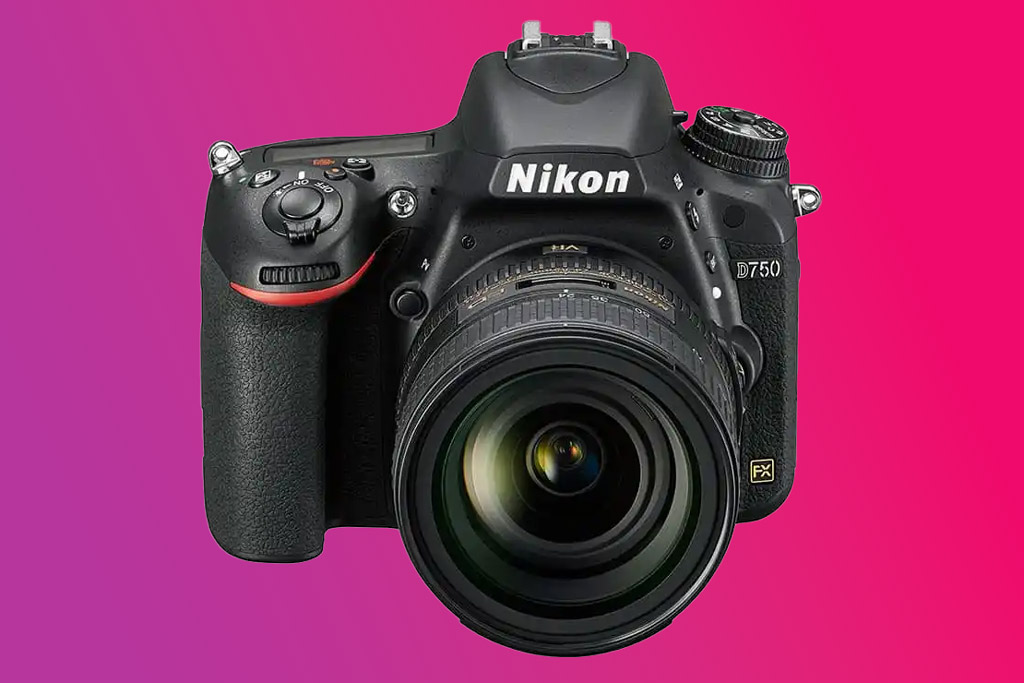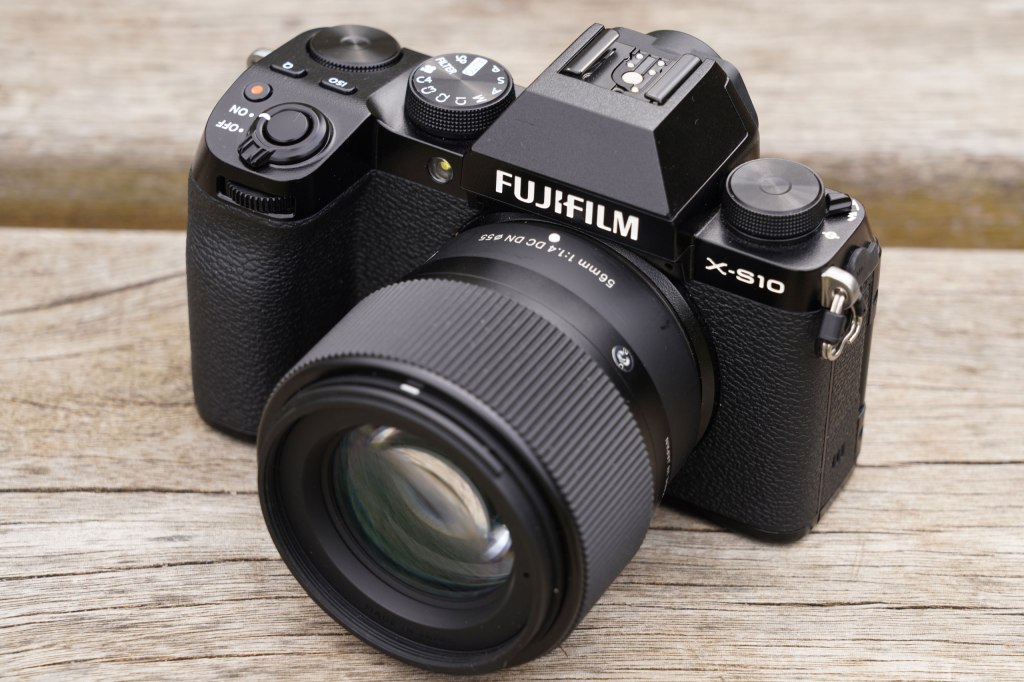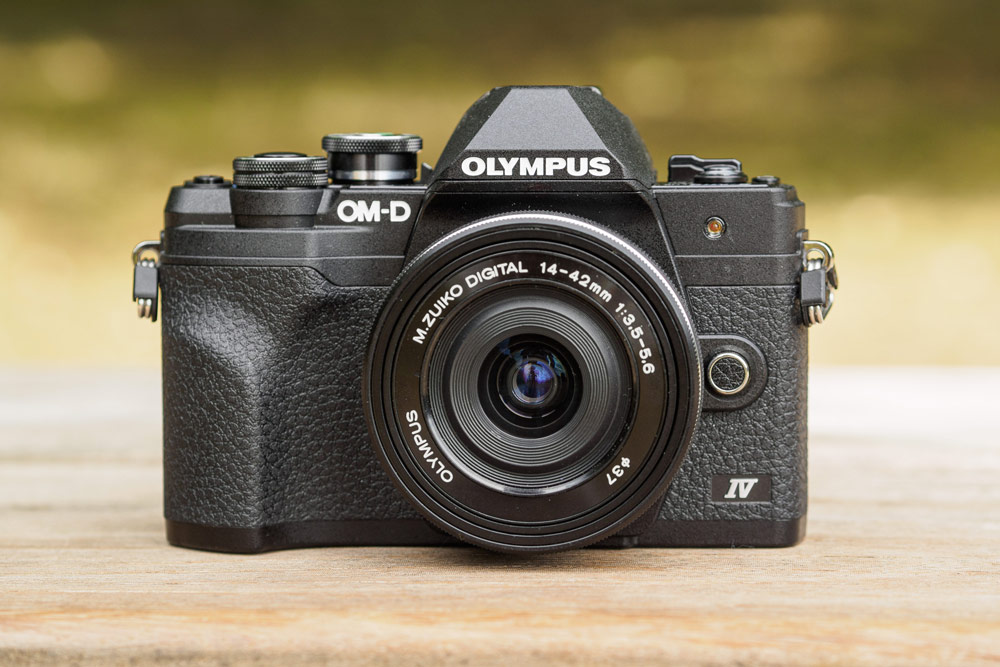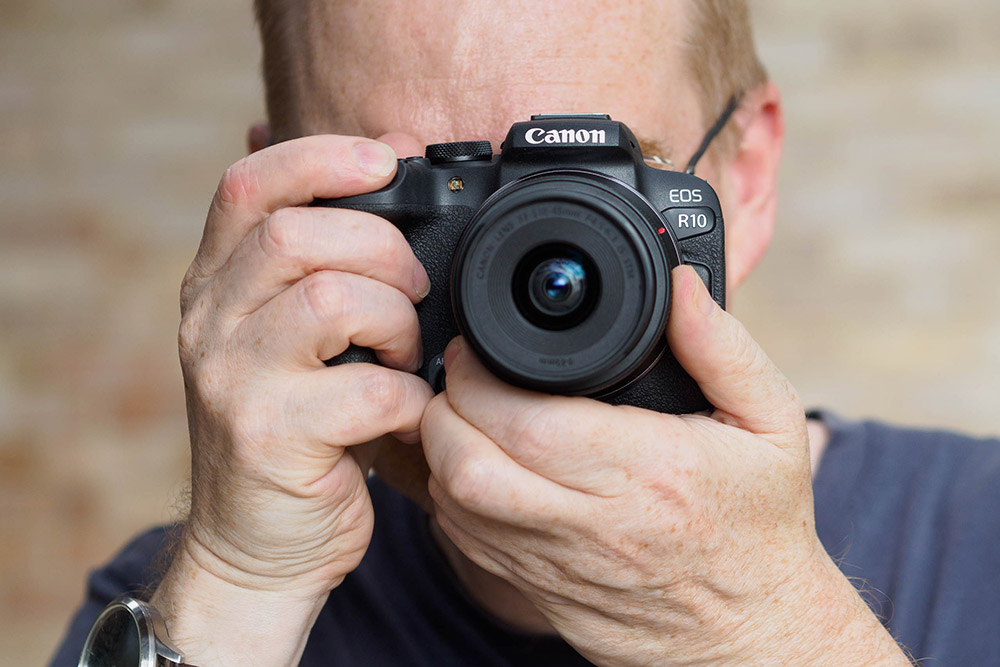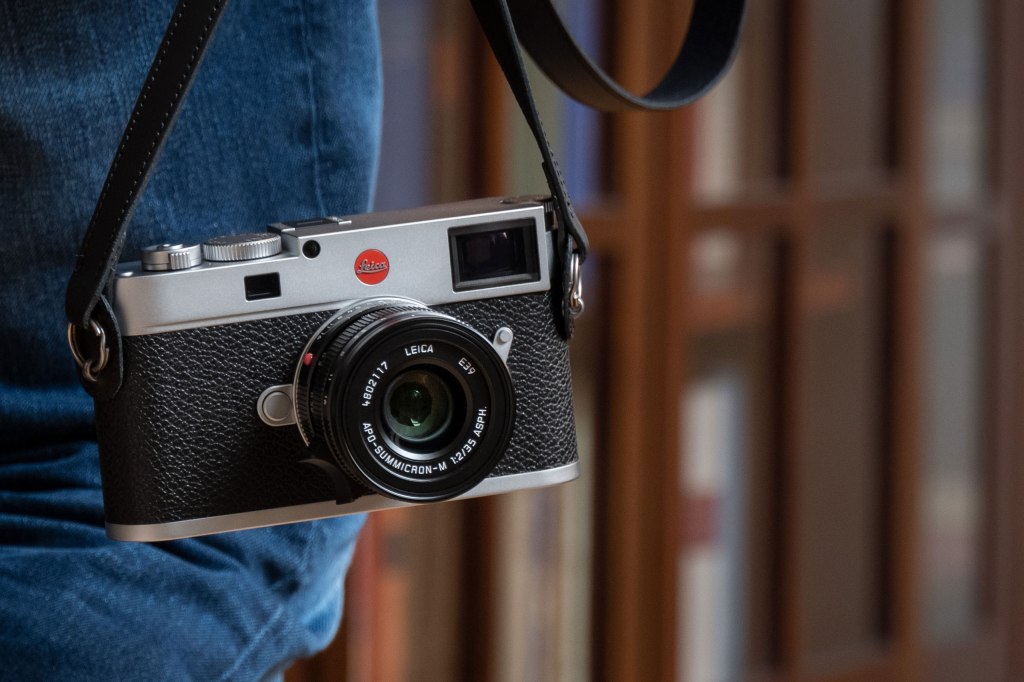Starting a photography course? Tim Coleman and the AP team pick out the best cameras for photography students, both DSLR and mirrorless.
Finding the best cameras for photography is the first, vital step in improving your picture-taking as a photography student. Whether you’re at the school level, starting college, or embarking upon an adult learning course, it’s essential to have a good camera that’ll help you learn the basics and provide you with room to grow. So, we’ve collated our guide to help you find the best option regardless of your level.
We’re dealing exclusively with interchangeable-lens cameras here: meaning DSLRs and mirrorless models. While compact cameras (i.e. those with fixed lenses that can’t be changed) certainly have their place, the flexibility of an interchangeable-lens camera is unparalleled, and having one will really help you get to grips with key concepts, learn core principles and elevate your photography.
First, we will unpack the most important features that the best cameras for photography students should have, and then we’ll get into our list. We’ve covered cameras from a range of different major manufacturers, coming in at various price points and all sporting a markedly different feature set. It’ll be up to you to decide which is right for your photographic studies, but you can also check out our guides to the best mirrorless cameras and best DSLRs for more options.
What factors should you look for in the best cameras for photography students?
1. Value
Students, of course, have to consider cost. The good news is that you don’t need the most expensive camera or the newest model, but rather one that caters for your projects. There are plenty of good-value beginner-level cameras that can meet the minimum requirements of your school or college, support your learning process and creative vision, and ultimately make great quality pictures.
DSLR cameras and lenses in particular give good bang for buck, and opting secondhand can free up cash to invest in additional lenses. We often recommend this route over a more expensive camera. Plus, ensure there’s enough left for items like external hard drives to store your pictures.
Value isn’t simply about getting a good deal; it’s finding a camera you are inspired to use each day, one that can grow with you as your skills develop, and even one that is part of a modern system the brand is still investing in.
For example, the DSLR camera market is largely stagnant with most DSLRs discontinued. Instead, future tech is in mirrorless cameras – so if you want to be part of the latest and greatest systems, mirrorless is probably your best choice.
If you’re still on the fence, read more on the pros and cons of DSLR vs Mirrorless here.
2. The right system
It’s well worth going into a camera shop and getting a feel for different brands and camera types in all their shapes, sizes and control layouts. Ask yourself which one feels good in the hand, puts a smile on your face, or sparks curiosity?
Check out a viewfinder that is great for clear viewing in bright light – not all mirrorless cameras have one. Flip-out screens can give that selfie-shooting experience like with your phone, but again, not all cameras have them. Get hands-on before you hand over your cash.
If you’ve only ever used a smartphone for photography, there are joys to be discovered in DSLR and mirrorless cameras. Beyond helping focus your attention on photography and away from distractions like TikTok, Instagram and the day’s Wordle, a dedicated camera also provides more manual control in addition to auto, so you can easily explore principles such as shutter speed and aperture.
In contrast, a smartphone by default makes those choices for you regarding camera settings, so you don’t learn as much.
3. Sensor size
Overall, increasing sensor size is one of the easiest ways to elevate the quality of your photography above what your smartphone can do. The larger the sensor, the easier it is to increase the resolution (size) of your pictures, the greater control you can have over depth of field (where lenses and subject distance are the same), and the ‘cleaner’ images can be in low light.
Computational photography in smartphones gives workarounds to sensor size limitations, but there are limits. DSLR and mirrorless cameras are the real deal and have much larger sensors than smartphones.
Popular sensor sizes (in size order) are full-frame, APS-C and Micro Four Thirds. There are beginner-friendly options for all sensor sizes, though larger sensors are usually more expensive. For more on this, have a look at our guide to full-frame and APS-C sensor size.
4. Lens choice
It is tempting to stick with the one lens that comes as part of the kit with your camera, but DSLR and mirrorless cameras are part of a system, and an additional lens is one of the best ways to support your development in photography.
Mirrorless Panasonic and Olympus cameras have hundreds of micro four thirds lenses to choose from, and while there are more APS-C format mirrorless lenses from Nikon and Canon, we are not spoilt for choice there. However, well established Canon and Nikon DSLRs have plenty of lenses to choose from.
As your photography passions come to the fore, having the ‘right’ lens is going to be key. Landscape photographers often use wide angle lenses, portrait photographers’ preferred lenses are wide aperture-ones (f/2.8 or even lower like f/1.4), while wildlife and action photographers might want to go telephoto or macro lens to get close up.
Read on to learn more about each of these excellent cameras…
Why you can trust Amateur Photographer
We spend many hours testing every product we recommend, in detail, in a variety of situations and shooting scenarios, and only use experts for our reviews, so you can be sure that you’re getting the best products. Find out more about our expert writers.
Best entry-level DSLR under $500/£500: Nikon D3500
Amateur Photographer verdict
A real budget option for those who want to learn the ropes, and want plenty of lenses to choose from.- Sharp pictures
- Insanely good battery life
- Loads of lenses to choose from
- Handy guide mode
- HD video only, not 4K
- LCD screen is fixed
- Basic autofocus
At a glance:
- 24MP APS-C CMOS sensor
- 3in Fixed LCD
- 1550-shot battery life
- $500 / £479 with 18-55mm lens
The Nikon D3500, which sits below the Nikon D5600, shares the majority of the same tech at a slightly lower price point. You get Nikon’s DX format sensor with 24MP resolution and no low-pass filter that’ll comfortably create sharp prints bigger than A3 size. It’s also a camera that slots comfortably in the hand, boasts class-leading battery life and a super-handy ‘Guide mode’ as you learn the ropes.
It’s a more basic 11-point AF system compared to the D5600, plus the LCD screen is fixed rather than flip-out, which might take some getting used to for selfie shooters. However, the optical viewfinder is good for clear viewing in bright light, and the D3500 is an otherwise excellent entry point to the world of photography.
Even though Nikon discontinued this beginner-level DSLR, there are plenty of deals to be found on the second-hand camera market from as low as $400. It’s worth it if you are budgeting for another lens like the Nikkor 50mm f/1.8G.
Read our full review of the NIikon D3500
Best rugged mirrorless for students: OM System OM-5
Amateur Photographer verdict
A camera that has impressive weather sealing and highly effective image stabilisation not just for stills but for video too. And with the High-res mode you can shoot 50MP images in camera- Exceptional weatherproofing
- Loads of clever computational features
- Powerful image stabilisation
- Loads of lenses available
- Port is micro USB, not USB
- Clunky menu system
- No joystick control
At a glance:
- 20.4MP Micro Four Thirds sensor
- Up to 7.5 stops image stabilisation
- IP53 weatherproofing
- $999 / £1,099 body only
- $1,399 / £1,299 with 12-45mm lens F4 PRO lens kit
If you’re planning on taking your camera on some rough-and-tumble adventures, the OM SYSTEM OM-5 is one of the best mirrorless options you can buy. It’s seriously weatherproof, with an IP53 weather-sealed rating, meaning you can take it out in all but the absolute worst of weather conditions. And this isn’t the OM-5’s only trick – it’s a fully featured camera that’s absolutely bursting with clever computational features, many of which make the most of its exceptional stabilisation system.
One of the foremost is the handheld high-res mode, which stitches together multiple quickfire images to create a high-res 50MP shot entirely in-camera. Most of these systems absolutely require a tripod in order to work – though if you do use a tripod with the OM-5, you can up that resolution to a whopping 80MP.
Elsewhere, there’s Starry Sky AF that brings amateur astrophotography into play by making it easier to focus on celestial images. Eye/Face detection AF are also present and correct. What’s more, the OM-5 is part of the Micro Four Thirds system, meaning you’ve got all the best Micro Four Thirds lenses to choose from. Just remember the crop factor of the smaller MFT sensor means the focal length effectively doubles – so a 45mm lens will behave like a 90mm. This allows you to get real telephoto reach on a budget.
Read our full review of the OM System OM-5
Best starter Canon DSLR: Canon EOS 250D / Rebel SL3
Amateur Photographer verdict
Generous features and easy to use, the Canon Rebel SL3 is an entry-level DSLR with scope to advance your photography. Great image quality, vibrant colours and enough fine detail for large prints.- Excellent image quality for the price
- Small and portable
- Useful vari-angle LCD screen
- Loads of lenses
- Dated 9-point AF system
- Inevitably bulkier than mirrorless equivalents
- No weather-proofing
At a glance:
- 24.1MP APS-C sensor
- 4K 25p video recording
- Vari-angle touchscreen display
- Under $749 with 18-55mm lens
This isn’t the absolute cheapest DSLR that Canon ever produced, as the EOS 250D (also known as the Rebel SL3 in the USA) was launched alongside the more basic and affordable Canon EOS 2000D and Canon EOS 4000D. However, for our money, this is the cheapest Canon DSLR worth buying, as the others are just a little too over-simplified to give students the level of sophistication they need. Tellingly, it didn’t take all that long for the EOS 4000D to be discontinued.
The EOS 250D / Rebel SL3 is built around a dependable duo of a 24.1MP APS-C CMOS sensor and Canon’s DIGIC 8 image processor. While it doesn’t give you the spectacular depth of full-frame, or the speedy bursts of sports-shooters, what it does do is reliably nail the shot in excellent quality, time and again. With a classic DSLR layout in a lightweight package, the EOS 250D / Rebel SL3 is ideal for learning the ropes of photography and understanding how settings affect an image, while also providing the student with room to grow. You could happily make images with the EOS 250D / Rebel SL3 for years without chafing too hard against its limits. And when you do want to upgrade, the whole Canon EF-mount DSLR system is open to you.
The EOS 250D / Rebel SL3 is a consistent favourite among photography students – you’ll likely spot a few in your first class. And why not after all – it’s a dependable, capable camera that delivers the goods, and is easily one of the best cameras for photography students you can buy.
Best enthusiast-level DSLR: Canon EOS 90D
Amateur Photographer verdict
A versatile and reliable DSLR ideal for sports, action and wildlife focused students. Its sensor resolves a great level of detail exceeding anything recorded from previous Canon APS-C cameras- Class-leading detail
- 10fps burst shooting
- Weather-sealed
- Good for video, too
- Less compelling than mirrorless equivalents
- Kit lens not the best
- Lacks stabilisation
- Single card slot
At a glance:
- 33MP APS-C CMOS sensor
- 1,300 shot battery life
- 3in vari-angle touchscreen
- $1000 body-only
Launched in 2019, the EOS 90D offers next-level detail thanks to its 33MP APS-C sensor. And it’s not too shoddy for video either, featuring 4K recording and no crop, plus a highly capable video autofocus performance.
The EOS 90D feels like a camera embracing both DSLR and mirrorless worlds – it’s a camera with that uncompromising DSLR build quality and comfortable form factor, but with the kind of live-view performance for video that we expect from mirrorless. This versatility definitely makes it a contender for one of the best cameras for photography students.
Battery life is excellent, the optical viewfinder large and bright, plus the touchscreen flips-out for front viewing. And let’s not forget that the Canon EF lens mount boasts a wide range of lenses for all creative endeavours. If you’re keen on a DSLR with next-level performance, the EOS 90D could be your best choice.
Read our full review of the Canon Eos 90D
Best full-frame DSLR for students: Nikon D750
Amateur Photographer verdict
A solid build camera with fast autofocus and easy handling that offers beautiful image quality that will let you make detailed A2 prints.- Sharp pictures
- Large LCD screen
- Great in the hand
- Quick AF
- HD video only, not 4K
- Discontinued
At a glance:
- 24MP full-frame CMOS sensor
- 3.2in tilt LCD
- $600 secondhand
Today, full-frame need not be an aspirational ‘look’ for students because there are plenty of good value options that also offer a simplified shooting experience.
We have considered the most recent entry-level full-frame DSLR models – and you have to go WAY back – and could have included the Canon EOS 6D II, which has its own advantages, but the Nikon D750 offers better value.
By going full-frame with the D750, photographers can enjoy greater control over depth of field, excellent low light image quality and a generous sized optical viewfinder that gives a wonderful experience during daylight shooting.
As it’s discontinued, the weather-sealed D750 can be had in excellent condition for around $600. Throw on a decent prime lens and you’ve got a formidable pairing.
Read our full review of the Nikon D750
Best mirrorless camera under $500/£500: Sony A6000
Amateur Photographer verdict
Though it is more than 10 years old, the Sony A6000 remains an excellent choice, particularly for those looking for a budget camera they can learn and grow with.- Sharp pictures
- Large LCD screen
- Great handling
- Quick autofocus
- Sharp pictures
- No 4K video
- Discontinued
At a glance:
- 24MP APS-C CMOS sensor
- 11fps burst mode
- 3in tilt LCD
- Used from $400 / £300 – £400 body only
One of the best-selling mirrorless cameras of all time can still be purchased new with a 16-50mm lens for a fraction over £500, or for around £300 secondhand, making it one of the best cameras for photography students who are on a budget.
And the fact that the Sony A6000 is still available new despite several updates including the A6100 and higher-level models like the twice-the-price A6400 – shows that it remains a compelling camera today, that enjoys the same APS-C Sony E-mount and range of high-quality lenses as its replacements.
Sony has always been a tech innovator, and so despite its age the a6000 still boasts a decent 24MP resolution, 11fps continuous shooting and high performing autofocus system. It’s compact and lightweight design lacks the same metal build quality as the A6400, but you do still get a tilt LCD screen plus an EVF tucked into the corner.
Later models especially offer improved the autofocus and video performance, but for those on a shoestring and focused on photography, the A6000 makes sense.
Best Fujifilm camera for students: Fujifilm X-S10
Amateur Photographer verdict
If you want to invest in a small and light mirrorless system as your first proper camera, the X-S10 is for you. You’ll also benefit from Fujifilm’s superb X-mount lens selection.- Fujifilm image quality
- in-body stabilisation
- Large grip
- 4k video
- No d-pad control on the rear
- Better AF elsewhere
- Not weather-sealed
- Discontinued
At a glance:
- 26.1MP APS-C sensor
- 3in vari-angle touchscreen
- 5-axis in-body stabilisation
- $700 / £700 body only
A step-up from the stylish Fujfilm X-T30 II, the Fujifilm X-S10 offers the extra power under the hood that you get from the former flagship Fujifilm X-T4 (which was one of the best APS-C mirrorless cameras available until the likes of the Fujifilm X-T5 arrived), but without the larger weather-sealed body.
A capable performer, you get beautiful 26.1MP still images with special thanks to some excellent X-mount lenses, a highly competitive 4K video performance, plus in-body stabilisation so you can ditch the tripod.
Like most Fujfilm cameras, the X-S10 looks the part and in this case has a larger-than-normal handgrip that we love, however you don’t get the dedicated retro dials for manual exposure.
If autofocus performance is important there are better alternatives, but for students, you’ll struggle to get more bang for your buck.
Read our Fujifilm X-S10 review
Best smartphone upgrade for students: Olympus OM-D E-M10 IV
Amateur Photographer verdict
A lovely little camera that’s a joy to use and delivers great pictures. It provides access to a large range of small, light and relatively affordable lenses.- Selfie touchscreen
- Easy step-up for smartphone users
- Small body and lenses
- Great value
- Small sensor
- No mic input
At a glance:
- 20.3MP Micro Four Thirds sensor
- 3in tilt touchscreen
- 2.36m-dot EVF
- 5-axis in-body stabilisation
- RRP £679 body-only, £779 pancake lens kit
The leap from smartphone to a ‘proper’ camera for photography can be intimidating, but Olympus makes that transition as easy as possible in the E-M10 IV. It offers a selfie touchscreen, easy button layout, bluetooth connectivity with easy-to-use app for loading pictures and remote control of the camera.
Crucially, image quality is a step up, especially with the host of high-quality and affordable Micro Four Thirds lenses available and a class leading image stabilisation for sharp handheld images in low light.
The camera is missing a mic input, so there are better options out there for those looking at getting into video, but for photographers, the E-M10 IV delivers, at an honest price.
Read our Olympus OM-D E-M10 IV review
Most stylish mirrorless camera for students: Nikon Z fc
Amateur Photographer verdict
It’s quick and responsive, has a fine viewfinder and screen, and is capable of excellent image quality. And of course has a gorgeous retro design.- Stunning looks
- High-quality kit lens
- Flip-out touchscreen
- Good value
- Not weather-sealed
- Very limited lens choice
At a glance:
- Design based on the legendary Nikon FM2
- 20.9MP APS-C sensor
- 4K video with no crop
- Continuous AF tracking
- $996 / £899 with 16-50mm VR lens
There are three Nikon Z mirrorless cameras fitted with an APS-C sensor, and they are all available with the excellent 16-50mm kit lens and share much of the same technology.
Where each camera differs is how they look and consequently the shooting experience. The Nikon Z fc is our pick as a stunning modern day take on the Nikon FM2, which is a 30-year-old film SLR. But don’t let its retro looks deceive you, the Z fc is a camera for today, with a 20.9MP sensor, 11fps burst, continuous tracking AF, 4K video with no crop, plus flip-out touchscreen.
The Z fc is also excellent value – nowhere else will you find a camera at this price with shutter speed, ISO and exposure compensation dials. It’s new tech, retro feel and good for students to learn the basics about exposure.
Where’s the rub? Well, the Z fc isn’t weather-sealed, and there aren’t many native APS-C lenses for the Z system. The Z fc will work with full-frame lenses, but wide-angle shooters only really have that kit lens.
Read our full review of the Nikon Zfc
Best full-frame mirrorless camera for under $700/£700: Sony A7 II
Amateur Photographer verdict
The a7 II is a great gateway for students into a hugely popular system regularly updated with the latest tech.- Robust and weather-sealed
- Small and powerful
- Solid low light image quality
- LCD screen is not touch sensitive
- Two updates old
- No 4K video
- Discontinued
At a glance:
- 24MP full-frame CMOS sensor
- 5-axis in-body image stabilisation
- 3in tilt LCD
- $650 / £574 used
Full-frame used to be the stomping ground for professionals; expensive, robust build quality and dedicated controls galore. Now however, there are many budget-friendly mirrorless options in this sensor format, including the Panasonic Lumix S5 (now updated with a Mark II version), Nikon Z5, Canon EOS R, plus the Sony a7 II (now twice updated).
Now it might not have the same video-friendly features, given its age, but for student photographers, we can still recommend the Sony a7 II all these years on, especially as it can be found for less than $700 / £600 on the secondhand market.
Even now, 24MP stills, a 2.4m-dot EVF, 117-point phase detection AF and 5fps all in a compact magnesium alloy shell is nothing to sniff at. Sony’s full-frame mirrorless cameras also benefit from a wide choice of Sony FE lenses, including a host of great value third-party options.
Highest performing mirrorless camera under $1000/£1000: Canon EOS R10
Amateur Photographer verdict
Even though there are a limited number of RF-S lenses available for the R10, if you want to invest in mirrorless tech with your first camera but don’t want to break the bank, this camera is ideal.- Quick Autofocus
- Great for action photography
- Decent form factor
- Not nearly enough native lenses yet
- Small viewfinder
- No in-body image stabilisation
At a glance:
- 24.2MP APS-C CMOS sensor
- New RF-S lens format
- 23FPS
- $979 / £999 body only
In our review of the EOS R10, we concluded that its autofocus and continuous shooting performance are in a different league to any other camera at this price point.
Fast and accurate AI-based subject detection AF system borrowed from the flagship EOS R3 with 23fps is nothing to sniff at for $1,000. Image quality and overall handling also impress in this camera that can recognise subjects ranging from humans, animals and vehicles.
It’s not all good news, however. The EOS R10 has very few lenses to choose from the buffer isn’t huge, while its viewfinder is a little small for our liking. This is a camera system in its infancy. But if Canon launches lenses that can realise the potential of the EOS R10, then exciting things lie ahead.
Blow the student loan: Leica M11
Amateur Photographer verdict
It’s a camera that appeals to photographers’ hearts rather than their heads. Are you are keen on a solid build high-res icon and even have the money to spare? The M11 might well be the camera for you- High resolution pictures
- Outstanding build quality
- Holds its value
- Expensive
- Focusing takes longer to perfect
At a glance:
- 61MP full-frame CMOS sensor
- 3in fixed touchscreen
- Electronic shutter
- RRP $9840 / £7,500 body-only
Want to blow the student loan in a single moment?* How about the Leica M11? Not strictly a mirrorless or DSLR camera rather a rangefinder, the Leica M-11 is north of $9000 / £7,000 body-only, plus the lenses aren’t exactly cheap either.
This certified Apple accessory boasts the highest resolution of any full-frame Leica camera, with ISO 64-5000 sensitivity. That 61MP sensor delivers stunning image quality and unleashes cropping potential so you can get more from your pictures.
If you’re unsure of what a rangefinder is, the shooting experience is altogether different to mirrorless and DSLRs, namely the manual focus process which you’ll either love or hate! One for photography ‘purists’, if the experience isn’t to your taste or you need to recoup the outlay, the M11 will sell on close to its RRP.
Read our full review of the Leica M11
*not recommended
How we test cameras
We test cameras primarily by using them to take photographs and video in a wide range of real-world situations. We evaluate their control layouts and handling, and the usability of their viewfinders and screens. We assess their autofocus across a range of different subjects and shooting scenarios and check their continuous shooting capabilities.
We also examine the effectiveness of their image stabilisation systems. Last but by no means least, we critically evaluate the image quality, in both JPEG and raw, including resolution, high-ISO noise, and dynamic range. We then take all these factors into account, along with such things as portability and lens systems, when giving our final conclusion and score. You’ll find the full breakdown of how each camera has performed in our full reviews.
Text by Tim Coleman, with contributions from Jon Stapley.
Related articles:
- Improve Your Photography
- Birmingham City students: elevating into the photographic industry
- Falmouth students share diverse techniques in Gweles exhibition


